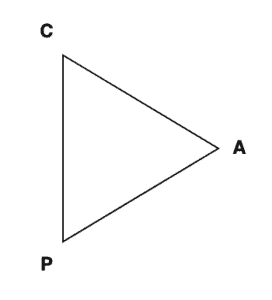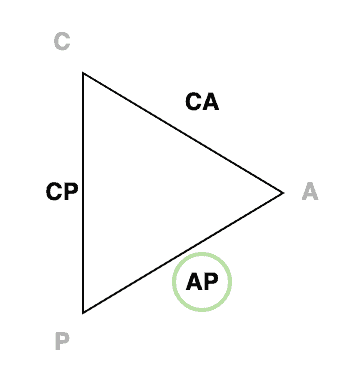1. 引言
在选择数据库系统时,我们经常会看到术语 ACID 或 BASE。它们描述了数据库在数据一致性和可用性方面的设计取向。
本文将深入讲解 BASE 的含义,帮助我们理解它如何影响数据库选型,从而影响我们的应用程序架构设计。
2. CAP 定理
CAP 定理(也称为 Brewer 定理,由 Eric Brewer 提出)是关于分布式数据库系统行为的理论基础。它指出:一个分布式数据库系统无法同时满足以下三个特性:
✅ 一致性(Consistency)
每次读取操作都返回最新的写入结果。一旦某个客户端成功写入数据,所有其他客户端都能立即读取到该最新数据。✅ 可用性(Availability)
每个请求都会得到响应,即使服务器部分节点出现故障,只要能通信,就一定能返回结果。✅ 分区容忍性(Partition Tolerance)
即使网络出现分区,系统仍能正常运行,客户端的请求应不受影响。
CAP 定理通常用下图表示:

任何分布式系统只能在这三者中选择两个。例如:
- CP 系统:保证一致性和分区容忍性,牺牲可用性。
- AP 系统:保证可用性和分区容忍性,牺牲一致性。
- CA 系统:理论上可行,但现实中几乎不存在,因为网络分区几乎不可避免。
⚠️ 注意:CAP 定理只适用于分布式数据库系统。单节点数据库不存在网络分区问题,因此可以忽略分区容忍性,专注于实现一致性和可用性。
但在分布式系统中,分区容忍性是必须面对的现实,所以只能在一致性和可用性之间做权衡。
3. BASE 是什么?
BASE 是 NoSQL 数据库中常见的设计模型,强调高可用性,但以最终一致性为代价。
BASE 是以下三个词的缩写:
✅ 基本可用(Basically Available)
数据分布在多个节点上,即使部分节点宕机,整体系统仍可用。但数据同步需要时间。✅ 柔性状态(Soft-state)
数据状态可能随时间变化,不保证实时一致性。客户端需要自行处理数据完整性。✅ 最终一致(Eventually Consistent)
写入操作不会立即在所有节点上生效,但最终所有节点会达成一致状态。
BASE 系统的目标是:尽可能保证每次查询都能成功,但允许数据在短时间内存在不一致。
实际表现
不同数据库系统实现 BASE 的方式可能不同,但通常包括以下特征:
- 数据在多个节点复制
- 写操作先写入主节点,再异步复制到其他节点
- 读操作可能读到旧数据(未同步完成)
踩坑点 ⚠️
使用 BASE 数据库时,客户端必须处理数据不一致的风险。例如:
- 用户刚提交订单,刷新页面却看不到
- 高并发场景下数据状态可能不一致
因此,在业务逻辑中要设计好补偿机制或最终一致性检查,不能完全依赖数据库保证一致性。
4. BASE 与 CAP 的关系
根据 CAP 定理,BASE 数据库属于 AP 系统,即:

- ✅ 高可用(Availability)
- ✅ 分区容忍(Partition Tolerance)
- ❌ 弱一致性(Consistency)
这种设计特别适合需要高可用、容忍数据短暂不一致的场景,比如社交网络、日志系统、缓存服务等。
5. BASE 数据库系统示例
以下是一些典型的 BASE 数据库系统:
| 数据库 | 特点 |
|---|---|
| ✅ MongoDB | 文档型数据库,支持自动分片与复制 |
| ✅ Redis | 内存数据库,支持持久化与主从复制 |
| ✅ Cassandra | 分布式列式数据库,强可用性设计 |
| ✅ Riak | 分布式键值存储,支持最终一致性 |
| ✅ DynamoDB | AWS 提供的分布式 NoSQL 数据库 |
这些数据库都以高可用性为核心目标,适合大规模分布式部署,但对数据一致性要求不高的场景。
6. 小结
本文我们介绍了:
- ✅ CAP 定理的核心内容:一致性、可用性、分区容忍性三者不可兼得
- ✅ BASE 的含义:基本可用、柔性状态、最终一致
- ✅ BASE 数据库属于 AP 系统,强调高可用和分区容忍
- ✅ 常见 BASE 数据库有 MongoDB、Redis、Cassandra 等
- ✅ 使用 BASE 系统需注意:客户端需处理数据一致性问题
选择 BASE 数据库时,应根据业务需求权衡一致性与可用性,合理设计数据同步与补偿机制,才能真正发挥其优势。